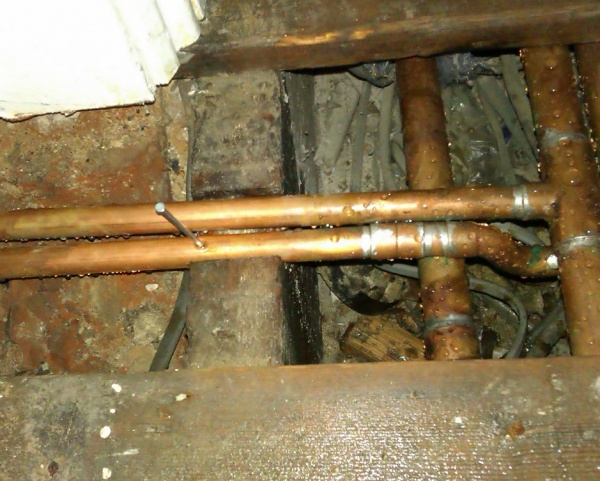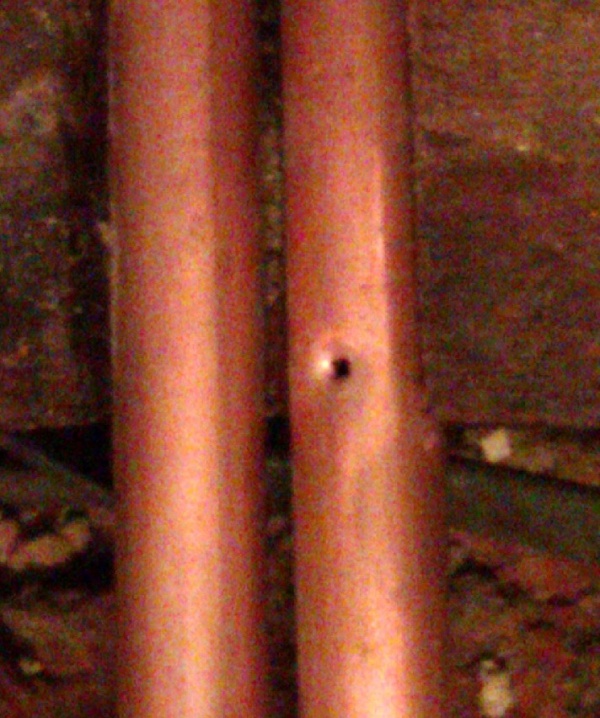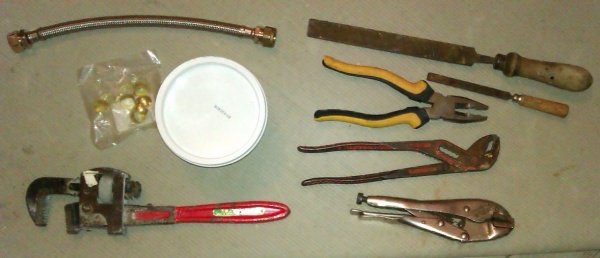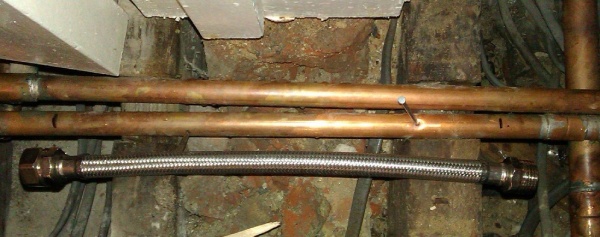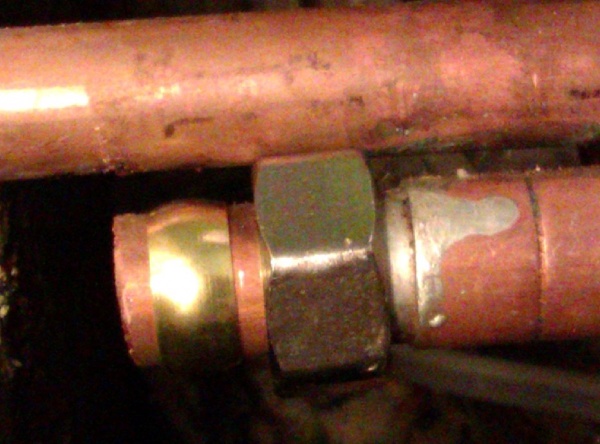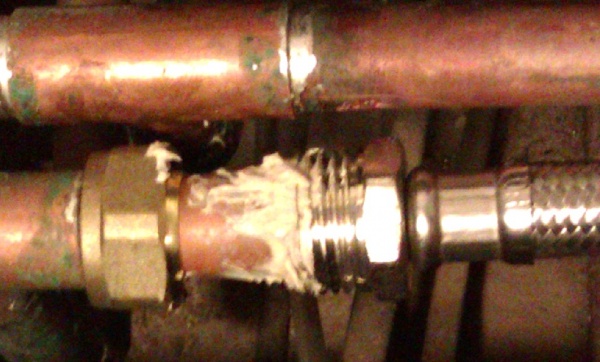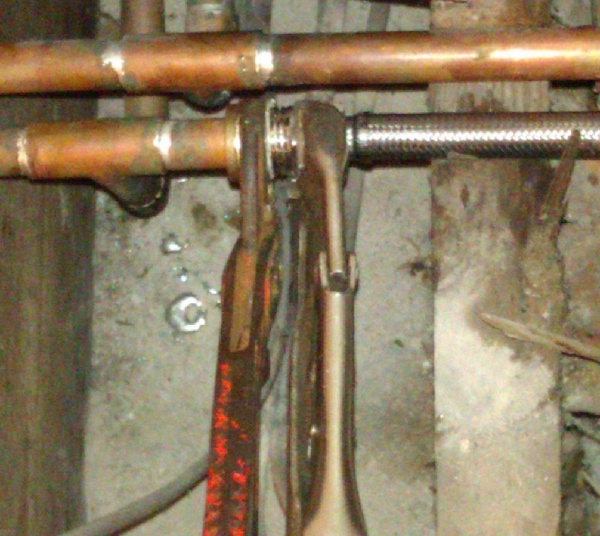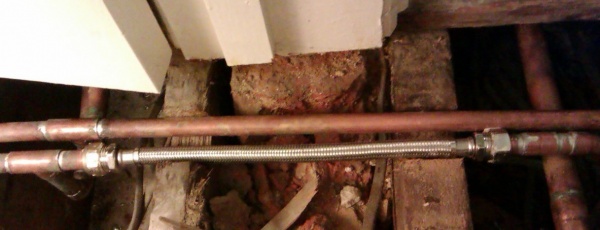Difference between revisions of "Pipe repair"
(more on options later) |
|||
| Line 13: | Line 13: | ||
You should be able to do it without spare olives, but I've had enough incidences of needing a new olive to always take spares. | You should be able to do it without spare olives, but I've had enough incidences of needing a new olive to always take spares. | ||
| + | |||
| + | First drain the pipework. | ||
| + | * If its mains cold water, turn off the main stopcock and open a tap below the damaged pipe. | ||
| + | * In this case its a central heating circuit, so a garden hose was pushed onto a draincock on the central heating (dip hose end in boiling water then it pushes on easily), and the drain point was opened until pressure reading dropped to zero. | ||
| + | * If its a hot water feed, turn off main water stopcock and turn on a hot tap below the level of the damage. | ||
| + | |||
| + | Choose your repair option... | ||
[[image:IMAG2573-3 Mark pipe.jpg|600px]] | [[image:IMAG2573-3 Mark pipe.jpg|600px]] | ||
Revision as of 11:15, 29 November 2014
How to repair a leaking pipe - a beginner's guide
The homeowner decided to install a fountain by wacking a nail through a floorboard and into a pipe.
Parts & tools - a couple of fairly big screwdrivers were also used as levers to move the pipe a tiny bit so the nut could turn.
You should be able to do it without spare olives, but I've had enough incidences of needing a new olive to always take spares.
First drain the pipework.
- If its mains cold water, turn off the main stopcock and open a tap below the damaged pipe.
- In this case its a central heating circuit, so a garden hose was pushed onto a draincock on the central heating (dip hose end in boiling water then it pushes on easily), and the drain point was opened until pressure reading dropped to zero.
- If its a hot water feed, turn off main water stopcock and turn on a hot tap below the level of the damage.
Choose your repair option...
Mark where to cut the pipe. Usually a rotating wheel type pipe cutter woud be used, but here there was no space for one. An oscillating saw was used. A hacksaw is also possible, but avoid putting force on the pipe by twisting it, you don't want the soft copper to distort.
Olives won't fit onto a sawn pipe end, so the pipe ends were filed to remove any external burr. This required getting the file in at a few odd angles.
Slide nut then olive on
Add linseed putty.
Some people think you should never use gloop with compression fittings because they were designed to be used dry. Choice is yours, fwiw I find they're more reliable on used pipes with putty.
Tighten each nut; the 2nd wrench stops the new plumbing rotating. I removed a 2nd floorboard to get enough tool access. I also cut a quarter inch off the side of one of the wooden joist notches so the new pipe could move very slightly to enable everything to line up & the nut to turn.
Job done!
This was a heating system pipe. So refill & repressurise heating according to boiler instructions. Add corrosion inhibitor ditto.
Nail floorboard back down, then you can repeat the whole process.
For an emergency repair you can use a Kibosh Clamp
